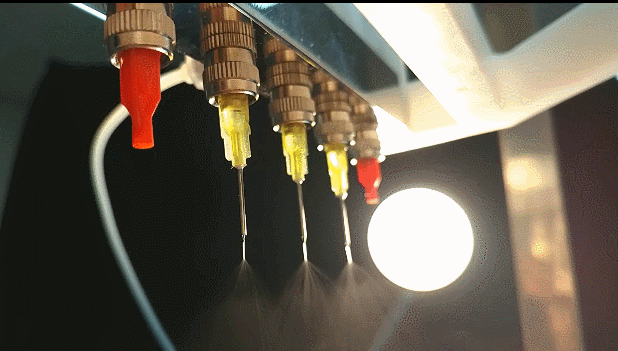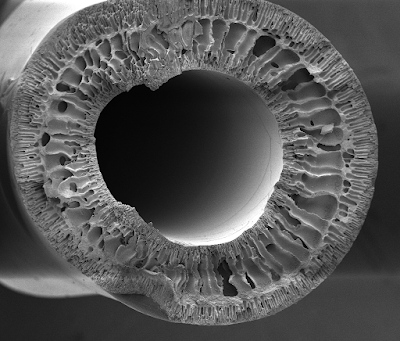Crearting Hollow NanoFibers

Electrospinning is a technique used to produce nanofibers from polymer solutions or melts. The process involves creating an electric field between a liquid polymer source and a grounded collector, which results in the stretching and solidification of the polymer into ultrafine fibers as the solvent evaporates.
ADVANTAGES
Electrospinning is a versatile nanofabrication technique with several compelling advantages. One of its primary strengths is the ability to generate nanofibers with an exceptionally high surface area-to-volume ratio, making it well-suited for applications that benefit from increased surface area, such as filtration, drug delivery, and tissue engineering. Moreover, electrospinning offers the flexibility to tailor fiber properties by adjusting key parameters like polymer concentration, flow rate, and voltage, enabling precise customization of the final material. This adaptability extends to the wide range of polymers that can be employed, encompassing both natural and synthetic varieties. Notably, the technique produces nanostructured materials with unique characteristics that enhance mechanical, electrical, and optical properties.
VARIATIONS
Electrospinning also supports the creation of innovative hollow or core-shell nanofibers, expanding its utility in fields like drug delivery. Biomedical applications further benefit from electrospinning's capacity to create biomimetic scaffolds that facilitate cell adhesion and growth. Additionally, its scalability for industrial production and the ease of incorporating functional additives such as nanoparticles contribute to its widespread adoption. While electrospinning boasts advantages such as low energy consumption and being a valuable research platform, it's important to acknowledge its associated challenges and limitations in terms of process optimization, scale-up feasibility, and mechanical strength in certain applications.

HOLLOW NANOFIBERS
To create hollow electrospun fibers, you need to incorporate a sacrificial core material within the polymer solution before electrospinning. This core material will later be removed, leaving behind a hollow structure. The key modification involves the addition of this core material, which can be a solid or liquid substance. During the electrospinning process, the polymer solution will encapsulate the core material, and after electrospinning, the core material can be dissolved or removed, resulting in the formation of the desired hollow nanofibers. The choice of core material and its subsequent removal method (e.g., chemical dissolution, heat treatment) will depend on your specific application and materials being used.
An example of a sacrificial core material for creating hollow electrospun fibers is a water-soluble salt, such as sodium chloride (table salt). Here's how it works:
-
Preparation: Dissolve the sodium chloride in the polymer solution (e.g., polyvinyl alcohol dissolved in water) to create a homogeneous mixture. The concentration of salt can be adjusted based on the desired thickness of the resulting nanofiber walls.
-
Electrospinning: Electrospin the polymer solution containing the dissolved salt using the standard electrospinning process. As the polymer solution is ejected from the spinneret and solidifies, the salt particles will become encapsulated within the nanofibers.
-
Removal of Salt: After electrospinning, immerse the collected nanofiber mat in water. The water-soluble salt (sodium chloride) will dissolve in the water, leaving behind hollow nanofibers.
The dissolution process will create voids within the nanofibers, resulting in a hollow structure. This method can be adapted for various polymers and sacrificial materials, depending on the specific application requirements.
Innovate with KAMLATECH